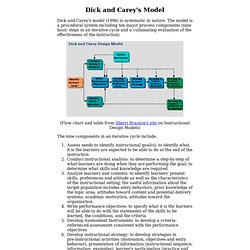

Engrade. Create timelines, share them on the web. Lessons Worth Sharing. ShowMe - The Online Learning Community.
Poke the Box. Create Your Rubric - Customize Your Rubric. Eyejot - Video Mail In A Blink. How [not] to Design an Online Course. Moving a face-to-face credit course to an online environment is far more challenging than one might expect – as numerous experienced and esteemed professors have discovered.
![How [not] to Design an Online Course](http://cdn.pearltrees.com/s/pic/th/design-learning-insights-36128011)
In this post learn vicariously through one professor’s experience of ‘what not to do’. I’d like to introduce you to Professor Harding a history professor who is transitioning his face-to-face undergraduate history course to a twelve-week, 3-credit online course. Professor Harding, though fictitious embodies the typical errors made by most course instructors with little or no experience in online learning when moving their face-to-face course to the online environment. The purpose of this post is to highlight common errors that I’ve observed and experienced as an instructional designer when assisting professors with their course transition to the online format. I also aim to provide guidance for educators involved in a similar course transition process along with resources for further support. Dick and Carey's ISD model.
Dick and Carey's model (1996) is systematic in nature.

The model is a procedural system including ten major process components (nine basic steps in an iterative cycle and a culminating evaluation of the effectiveness of the instruction). (Flow chart and table from Sherri Braxton's site on Instructional Design Models) The nine components in an iterative cycle include: Online tools and applications - Go2web20.